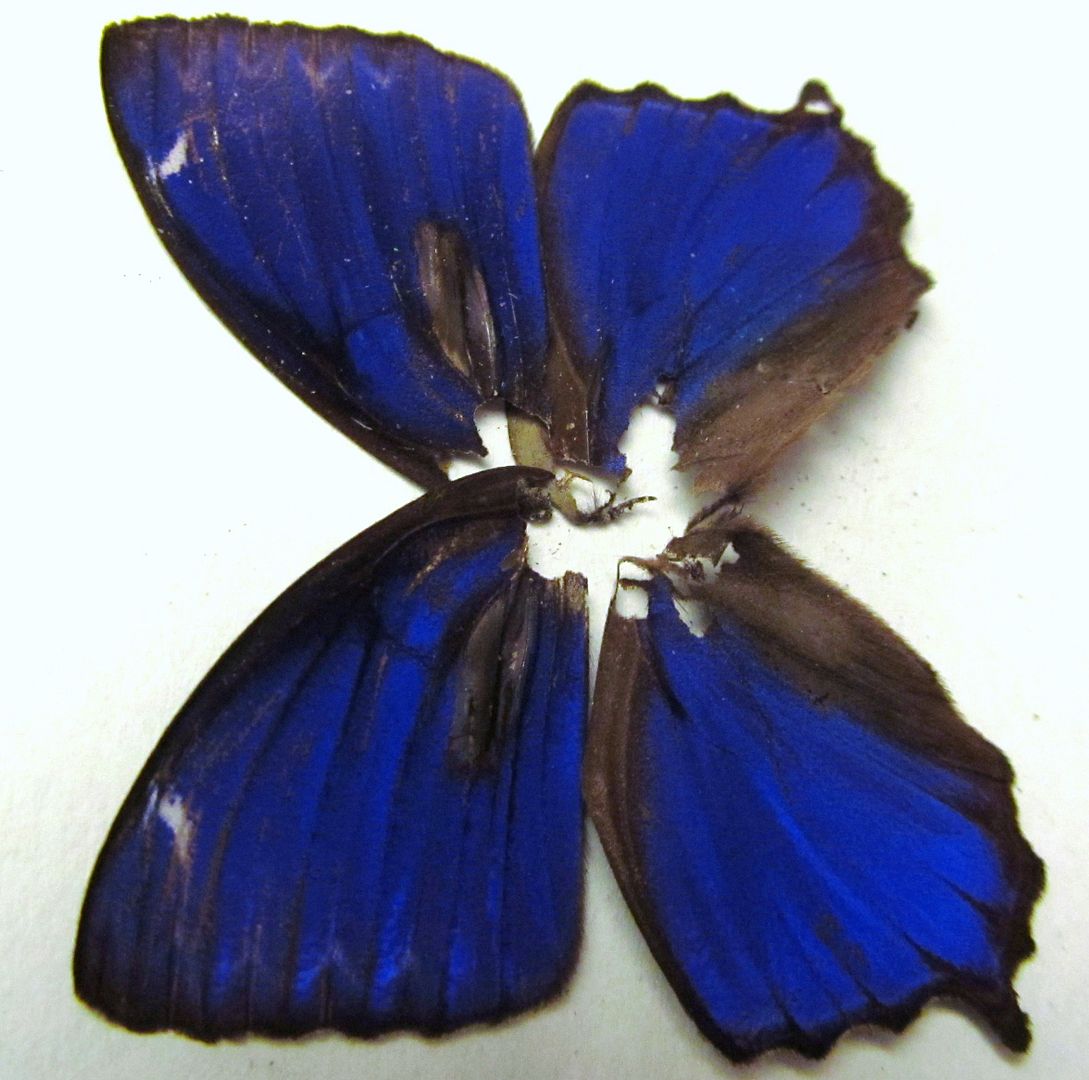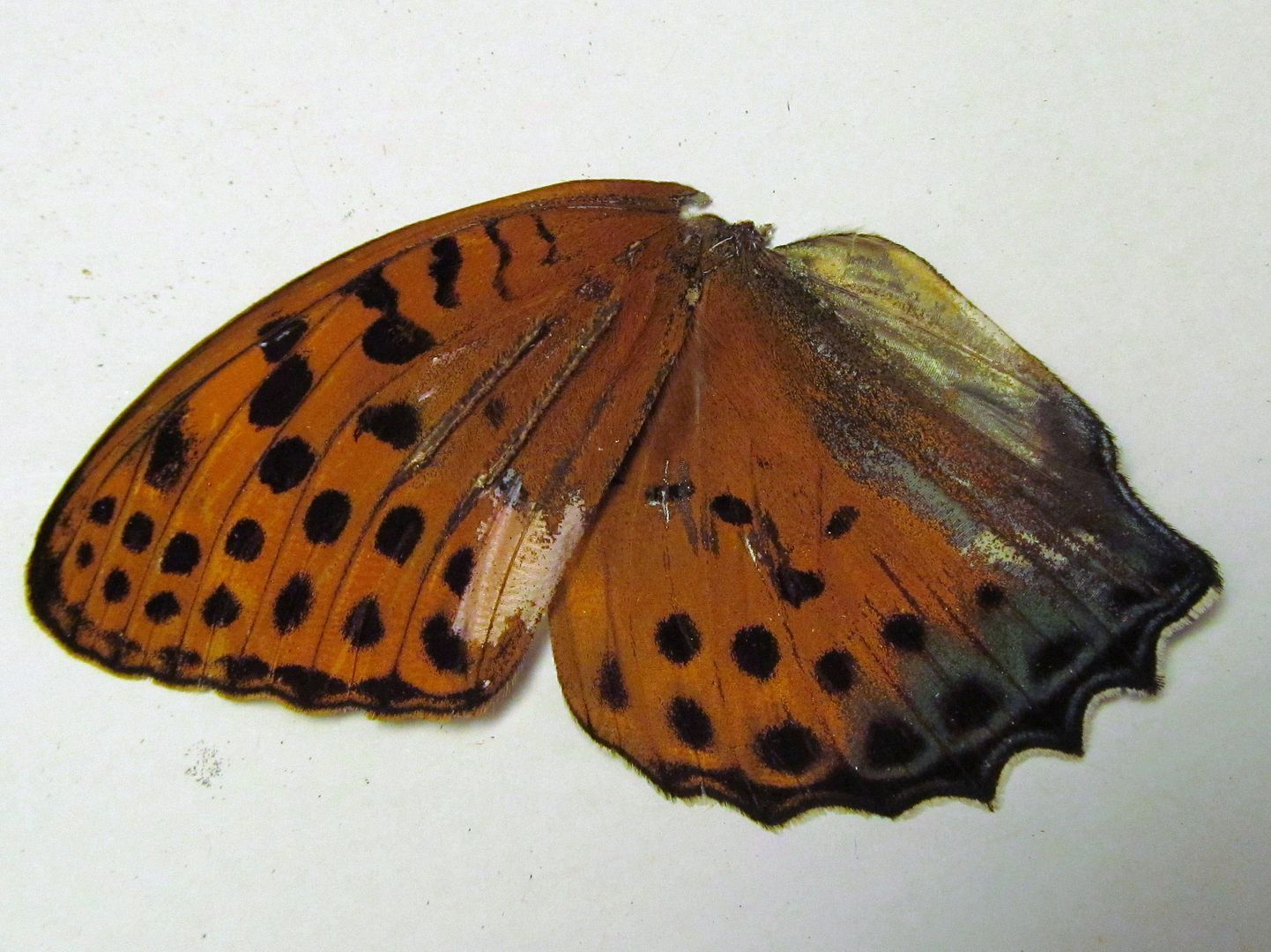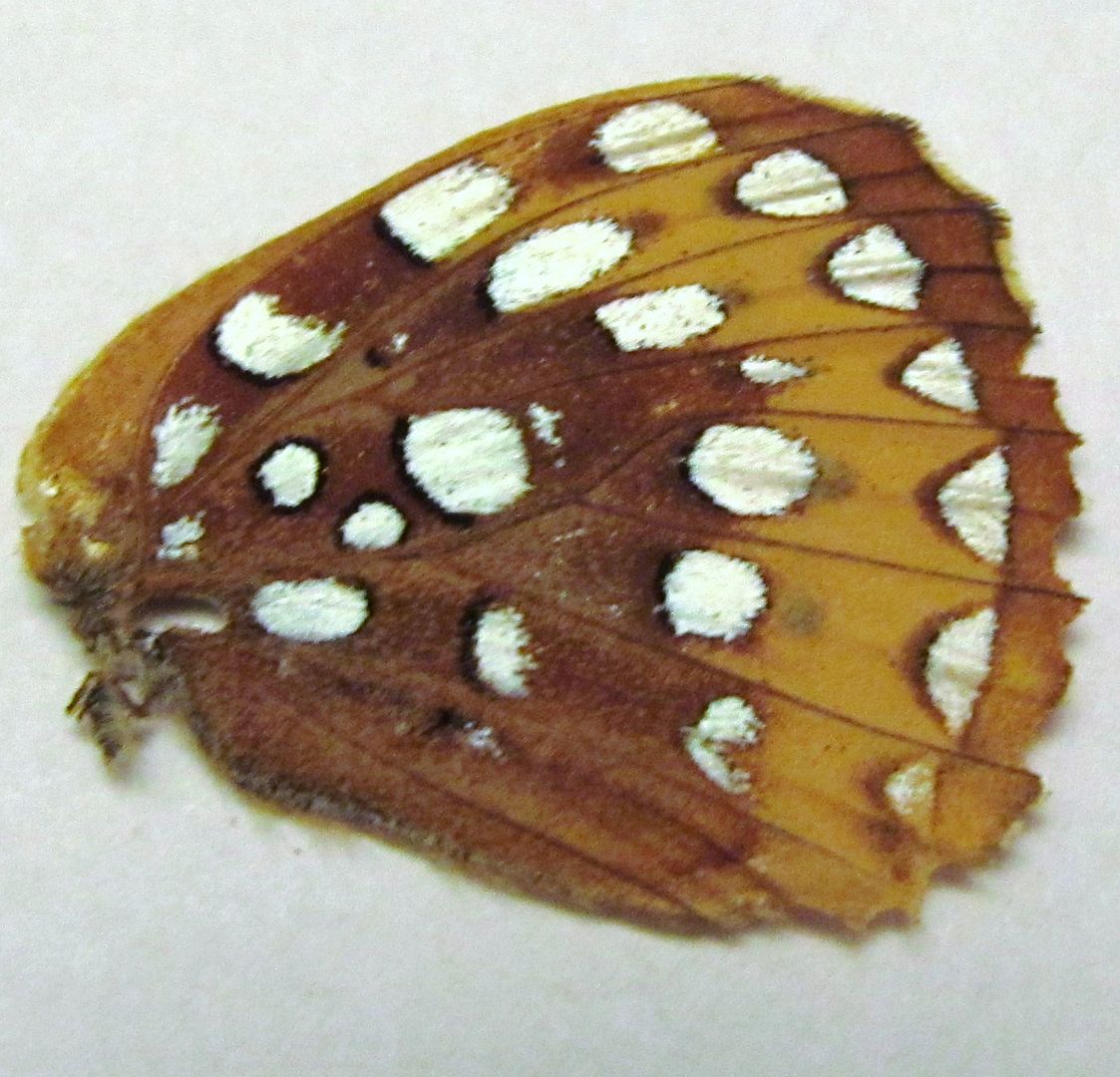|
|
Post by lilstinkpot on Jan 3, 2013 11:24:42 GMT -8
I bought some assorted "practice" flutterbys off eBay a while ago, and I got a couple NOID ones and some wings. Naturally, the prettiest by FAR got munched on by a carpet beetle, and is in very bad shape. I would like to ID it so that I can find another. Three are a couple wings that would make a nice bonus, but aren't important. All I know is that the last single wing is probably a metalmark of some sort. I can't even guess where they were caught. Sorry. Blue NOID. Sorry, I forgot the ruler. It's about 1.5" or ~3cm across. Kinda small.   Mystery bonus number one:   Mystery bonus number two: I know, it's just one wing. Don't fret trying to ID it, unless a name just screams out. Those lift patches are VERY reflective.  Thanks in advance. |
|
|
|
|
|
Post by simosg on Jan 3, 2013 11:35:54 GMT -8
Those are not Papilios. Number 2 belongs to Nymphalidae for sure, number one probably also.
Hannes
|
|
|
|
Post by Adam Cotton on Jan 3, 2013 14:04:09 GMT -8
Mystery bonus number one looks like Childrena childreni, but I may be wrong, as I'm not familiar with the options. If it is, it comes from various countries across Asia.
|
|
|
|
Post by lepidofrance on Jan 3, 2013 14:20:47 GMT -8
1. The blue one (upperside) is
Ptychandra leucogyne Felder, 1867 or P. lorquinii Felder, 1861 (Satyrinae), both from Philippinas (Luzon). (male sample)
2. As said by Adam C. : Childrena childreni Gray, 1831 (Nepal, Western China, Upper Myanmar, etc.
|
|
|
|
Post by lepidofrance on Jan 3, 2013 14:36:06 GMT -8
The hindwing :
globally, has the same arrangement of white spots (or silver) than Fabriciana (Speyera) aglaja L., 1758. However, the colors are unusual (at least for an inhabitant of Western Europe).
I quote Gorbunov & Kosterin (The Butterflies of North Asia in Nature) : "The butterflies from southern plains region (= Siberia, Primorya) are on average larger, their UNH (HW underside) ground colour is often satured ochre-yellow ..." (vol. II, page 136)
|
|
|
|
Post by lilstinkpot on Jan 3, 2013 15:01:59 GMT -8
Oops. See, that's where I need to read up. I guess I confused Papilio with Lepidoptera.  Edit: I fixed the title. Thanks for the help! |
|
|
|
|
|
Post by davemoore on Jan 3, 2013 15:09:08 GMT -8
|
|
|
|
Post by lepidofrance on Jan 3, 2013 16:19:38 GMT -8
Right ! Speyeria cybele from N. America and not Speyeria aglaja from the palearctic area. Sorry, I know nothing about the nearctic fauna.   |
|
|
|
Post by lilstinkpot on Jan 3, 2013 17:25:56 GMT -8
There we go. I'm at home now, and can re-size the pictures on the PC. iPhones aren't as great as Apple want's you to think. It *IS* just an over glorified cell phone.
|
|
|
|
Post by papilio28570 on Jan 3, 2013 21:47:24 GMT -8
Number 1 is: Ptychandra lorquinii Felder, 1861 Following will be a shot of the underside and a shot of the female. Took these on Luzon Island, PI 36 years ago Attachments:
|
|
|
|
Post by papilio28570 on Jan 3, 2013 21:48:11 GMT -8
Number 1 is: Ptychandra lorquinii Felder, 1861 male ventral Attachments:
|
|
|
|
Post by papilio28570 on Jan 3, 2013 21:58:38 GMT -8
Ptychandra lorquinii Felder, 1861 female. Attachments:
|
|